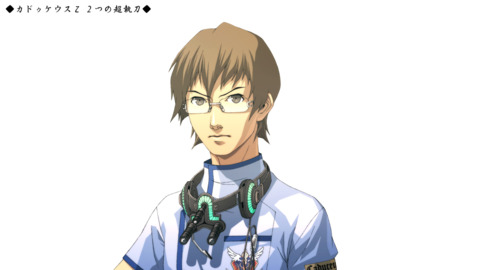

Forceps - Used for removal of foreign objects and tumors.Drain - Used to remove excess fluids, such as blood.Antibiotic gel - Used to disinfect areas and treat small cuts.Surgical laser - Used to cauterize objects that are too small to remove from the body otherwise.There are a number of instruments available for surgery. As with every game in the series, the player is not required to complete these operations.

As with every game in the series, the X-missions are unlocked after beating the game once, and are found in the challenge mode, with fake records used to fill the time/score/rank slots (such as exactly 30 seconds remaining on the clock). However, the game does not notify the player about the X-missions, unlike the other games in the series. The X-missions are seven operations, each one containing an Extreme version of a strain of GUILT. In addition to normal operations, there are operations known as "X-missions". Three save slots are available, but only the best score is recorded for each operation. The player may repeat any operation in Challenge Mode and attempt to earn a better grade. The total score is then ranked, with special score rankings for each operation. Upon successful completion of an operation, the player is ranked based on the time remaining, the health level of the patient, and a net score based on the accuracy of the operation. If the player runs out of time, reaches the miss limit, or the patient's vitals reach zero, another surgeon will take over the operation, which will always seem to fail. During each operation, the player must keep the number of errors committed below a set limit, ensure that the patient's vitals remain above zero and keep within the time limit. The top screen is used to display instructions, the time remaining, the player's miss limit and score.Ī typical mission requires the player to operate on a patient. The lower screen on the DS is used to display the patient, the patient's vitals, the instruments available, and the operation field. Each operation must be completed in order to access the next one and progress through the game. Trauma Center is divided into several chapters and operations within each chapter. A remake, Trauma Center: Second Opinion, was released in 2006 as a launch title for the Wii console and a direct sequel, Trauma Center: Under the Knife 2, was released in 2008.
TRAUMA CENTER SECOND OPINION PLOT SERIES
His ability leads him to work for Caduceus, an organization dedicated to researching diseases, where he is tasked with treating a series of increasingly dangerous strains of a man-made disease called GUILT.Under the Knife received favorable reviews, gaining aggregate scores of 80.31% and 81 on GameRankings and Metacritic. The player assumes the role of Derek Stiles, a young surgeon who possesses a unique and rare ability called the "Healing Touch," which briefly allows him to operate exceptionally quickly and accurately. The player uses the Nintendo DS touch screen to use the available medical instruments and perform the required actions. The game was released in Japan on June 30, 2005, in North America on October 4, and in PAL regions on April 28, 2006.Like all games in the Trauma Center series, the player is tasked with performing surgery on various injured patients. Super Surgical Operation: Caduceus), is a surgical simulation game developed and published by Atlus for the Nintendo DS and is the first entry in the Trauma Center series. Trauma Center: Under the Knife, known in Japan as Chōshittō Caduceus (超執刀 カドゥケウス Chōshittō Kadukeusu?, lit. If there are no issues present, remove this notice. Help improve it by fixing any issues that are present.


 0 kommentar(er)
0 kommentar(er)
